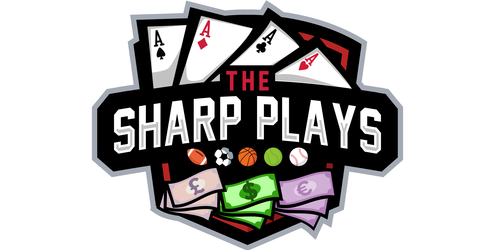
🧠 Masterclass: Beating or Fading Sharp Money In-Play
Originally published in TSP Daily — March 7–8, 2022
With March Madness upon us, it’s the perfect time to revisit a highly valuable in-play strategy. Whether you’re looking to beat the sharps to a better price or strategically fade them when value emerges, this system has delivered excellent results using disciplined entry points.
Let’s break it down with real examples.
🎯 Part 1: Beating the Sharp Side to a Better Price In-Play
(Published March 7, 2022)
📌 The Setup
- Sharp money hits Winthrop/Longwood UNDER 144, driving it down to 140.
- TSP advises waiting for in-play value instead of betting pregame.
What should your in-play target be? Check the TSP Live in-play price table covering most major sports: https://tsp.live/tsp-live-in-play-strategy-targets/
💡 The Strategy
To capitalize on better prices in-play, use this rule (for NCAAB):
- Conservative approach (preferred): Wait for +5 points above the sharp entry price.
- Aggressive approach: Settle for +3 points above sharp entry price.
✅ Why It Works
If sharps are betting UN144, and in-play offers:
- UN147 → aggressive value grab (3 pts)
- UN149 → premium value (5 pts)
Example: You wait and grab UN149 in-play. It hits. Sharps got UN144, which also wins. But your value is better, and your ROI is higher.
Another game, Manhattan UNDER, sharp money loses on UN136, but your in-play entry at UN139 wins. That’s 2-0 for you, 1-1 for the sharps.
⚠️ Key Caveat
This strategy only applies if nothing major changes in-game, like a key player injury or foul trouble. If that happens, recalculate or avoid.
🧨 Part 2: Fading the Sharp Side In-Play
(Published March 8, 2022)
What if you could fade the sharp side once the value flips far enough?
🧠 The Logic
- Sharps bet Wright St +1
- Assume a 5-point edge was needed to take that side → Wright St value ends at -4
- Neutral zone = Wright St -4.5 to -6
- Once line hits Cleveland St +6.5, value flips to the opposite side
- Add +5 more points for premium in-play fade value → Cleveland St +11.5
- For aggressive bettors → +9.5
🎯 Target Entry for a Sharp Fade
- Conservative: Wait for 17.5 points off sharp side price
(e.g., Wright St +1 → Cleveland St +18.5) - Aggressive: Wait for 15.5 points
In this example: Cleveland St +16.5 hits twice in-game. Sharps bet Wright St +1. Final score: Wright St wins by 15.
Outcome: Cleveland St +16.5 cashes, but aggressive +14.5 loses by the hook.
🛠 Quick-Reference Value Targets by Sport
| Scenario | Conservative Target | Aggressive Target |
|---|---|---|
| Basketball (sharp side) | +5 points | +3 points |
| Basketball (fade side) | +17.5 points | +15.5 points |
| Football (sharp side) | +10 points | +7 points |
| Football (fade side) | +21.5 points | +17.5 points |
🧮 All values are relative to best pregame line available to sharp money.
📌 A Recap of the Rules (Short Version)
To use this strategy:
- ✅ Sharp Action is Required: The play must be a full-game alert featured in TSP Live, Twitter, or Telegram.
- 📈 Stick to Minimum In-Play Thresholds:
- Sharp side = +5 points better than pregame (or +3 for aggressive)
- Fade = 17.5 points worse than pregame sharp side (or 15.5 for aggressive)
❌ This doesn’t work on random plays or weak market moves.
🟢 It requires a known valuation baseline from sharp betting.
🎁 Bonus Examples
- Longwood UNDER 140 → Wait in-play for:
- OVER 122.5 (conservative)
- OVER 124.5 (aggressive)
➤ Both hit. Sharp play wins. Your middle hits too = 2-0 sweep.
- Louisville -1.5 vs Georgia Tech is a sharp side?
➤ Then target Georgia Tech +19 (conservative) or +17 (aggressive) in-play.
🚨 Final Thoughts
This strategy is a gem when deployed with patience and discipline:
- ✅ Know the sharp entry point
- ⏳ Wait for in-play swing (don’t chase out of boredom)
- 📉 Don’t force action when your number isn’t hit
- 💰 Use this during the tournament — where volatility increases your shot at value
Betting in-play isn’t just for watching the game…
It’s a second-chance engine to beat or fade sharp money with better risk-reward.
Good luck in your tournament action!
~ The Sharp Plays
